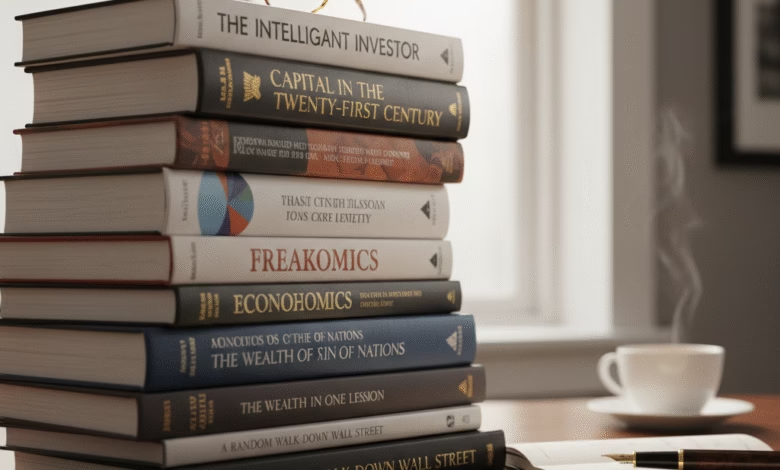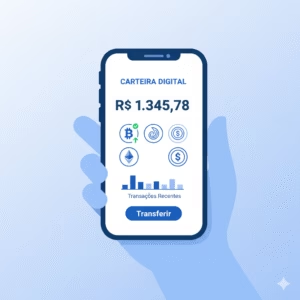Why are stocks traded in lots of 100 shares?
Understand why shares are sold in lots and not individually

If you’ve spent any time in the world of investing, you may have come across the term “round lot.” For decades, the standard unit for trading stocks was a batch of 100 shares. Buying 100, 200, or 500 shares was considered a “round lot,” while buying any other quantity—whether it was 1, 15, or 99 shares—was labeled an “odd lot.”
In today’s world of fractional shares and one-click trading, where you can buy a sliver of a stock for just a few dollars, this 100-share rule can seem like a bizarre and arbitrary relic. Why 100? Why was trading in these specific blocks so important for so long?
The answer isn’t found in a complex financial formula, but in the noisy, paper-filled history of the stock market itself. The 100-share standard is a fascinating leftover from a bygone era, a time before computers and the internet, when the physical constraints of trading made standardization an absolute necessity. This guide will unravel the mystery of the round lot, exploring its practical origins, its impact on investors, and why its legacy still echoes in the market today.
A Trip Back to the Pre-Digital Trading Floor

To understand the 100-share rule, you have to erase the image of a modern stock exchange powered by silent, blinking servers. Instead, picture the trading floor of the New York Stock Exchange (NYSE) in the mid-20th century: a chaotic arena of shouting brokers, frantic hand signals, and a blizzard of small paper tickets. This was the era of open outcry, a physical and intensely human system for matching buyers and sellers.
In this environment, efficiency and simplicity were paramount. Every single trade had to be manually recorded, physically relayed, and later reconciled by armies of back-office clerks. Now, imagine the logistical nightmare if brokers were shouting out orders for random quantities of shares—one trying to sell 17 shares, another looking to buy 32, a third offering 58. The process of matching these “odd lots” would have been incredibly slow, inefficient, and prone to costly errors.
The solution was to create a standardized unit of trade: the round lot of 100 shares.
By making 100 shares the default block size, the exchange created a more uniform and liquid marketplace. It was far easier and faster for a floor broker to execute an order for “five lots” of a stock than it was to find a counterparty for a specific, irregular number of shares. This standardization streamlined the entire process, from the shouting on the floor to the mountain of paperwork that had to be settled at the end of the day.
This system was also deeply connected to the physical nature of stock ownership. Before digital records, owning a stock meant you possessed a physical stock certificate. These ornate paper documents were legal proof of ownership. Printing and transferring certificates for uniform, 100-share blocks was significantly more manageable for transfer agents and brokerage firms than creating custom certificates for every conceivable trade size.
The Economics of Efficiency: How Round Lots Reduced Costs
The 100-share standard wasn’t just about convenience; it was driven by powerful economic incentives that shaped the entire structure of the market. For brokers and market makers, time was money, and efficiency directly translated into profitability.
- Commissions and Fees: In the pre-internet era, brokerage commissions were not the zero-cost afterthought they are today. Commissions were often fixed or had a high minimum charge, regardless of the trade size. This meant that trading a small number of shares was disproportionately expensive. A $50 commission on a 10-share trade was a massive 5% of a $1,000 investment. That same $50 commission on a 100-share trade (a $10,000 investment) was a much more palatable 0.5%. This fee structure naturally pushed anyone who could afford it to trade in round lots to minimize costs.
- Liquidity and the Bid-Ask Spread: The “specialist” on the trading floor—the market maker responsible for maintaining an orderly market in a specific stock—provided two prices: the bid (the price they would buy at) and the ask (the price they would sell at). The difference is the spread. The system was designed to provide the tightest, most competitive spreads for round lots, as this was where the bulk of the trading volume was. Standardizing the trading unit made it easier for specialists to manage their inventory and risk, leading to better prices for these 100-share blocks.
The ‘Odd Lot’ Problem: A Disadvantage for the Small Investor
While the round lot system created efficiency for the market as a whole, it created a significant barrier for the average person. For decades, the small retail investor was at a distinct disadvantage. If you couldn’t afford to buy 100 shares of a stock, you were relegated to the less efficient world of odd-lot trading.
Odd-lot orders were not executed in the main auction on the trading floor. Instead, they were handled through a separate process, often by specialized “odd-lot dealers.” Here’s how it typically worked:
- Batching Orders: Your order to buy 20 shares would be sent to an odd-lot dealer. This dealer would wait and batch your order together with other small orders from other investors.
- Delayed Execution: Once the dealer had accumulated enough small orders to form a round lot (or several), they would then go into the main market and execute the trade.
- Less Favorable Pricing: The price you received was often worse than the prices available to round-lot traders. The odd-lot dealer would typically execute the trade at the next available round-lot price and then add a small differential, or fraction of a point, to your price as their fee for the service. This meant odd-lot investors systematically bought slightly higher and sold slightly lower than everyone else.
This system effectively created a two-tiered market: a fast, efficient, and cheaper market for institutions and wealthy investors trading in round lots, and a slower, more expensive market for the small retail investor.
The Digital Revolution: How Technology Made the Round Lot Obsolete

The entire foundation of the round-lot system began to crumble with the arrival of two transformative forces: computers and the internet. Electronic trading didn’t just speed up the old system; it completely obliterated the physical constraints that made the 100-share rule necessary in the first place.
- Algorithmic Matching: Computerized exchanges and modern algorithms can match buy and sell orders of any size in microseconds. An order for 17 shares can be seamlessly matched with orders for 10 shares and 7 shares without any human intervention. The logistical nightmare of the past simply vanished.
- The Rise of Online Brokers: The internet gave rise to online brokerage firms like E*TRADE and Ameritrade, which completely upended the old commission structure. They used technology to drastically lower costs, eventually leading to the zero-commission environment we have today. This removed the economic penalty for placing small trades.
- Decimalization: In 2001, U.S. stock exchanges switched from pricing stocks in fractions (like 1/8th or 1/16th of a dollar) to pricing in pennies. This “decimalization” allowed for much smaller price increments and tighter bid-ask spreads, further reducing the structural advantages that round lots once held.
Suddenly, the technological and economic reasons for the 100-share standard were gone. Anyone could trade any number of shares, from 1 to 1,000, and get the same pricing and execution quality.
The Rise of Fractional Shares: The Final Nail in the Coffin
If electronic trading made the round lot obsolete, the innovation of fractional shares buried it for good. Pioneered by a new wave of fintech brokerage apps, fractional shares allow investors to buy a piece of a stock based on a dollar amount rather than the number of shares.
Want to invest in a stock that trades for $1,000 per share but only have $50 to invest? No problem. You can now buy 0.05 shares of that company.
This has been the ultimate democratization of the stock market. It makes every stock, no matter how high its price, accessible to every investor, no matter how small their budget. The concept of needing to save up enough money to buy a single share—let alone a block of 100—has become completely antiquated for the modern retail investor.
Why Does the ‘Round Lot’ Still Exist Today?

Given all this, you might be surprised to learn that the term “round lot” is still used in the financial world. While it has become almost entirely irrelevant for the average person buying and selling stocks, the 100-share block remains a standard unit of measurement in a few key areas:
- Institutional Trading: Large institutional investors (like mutual funds and pension funds) that trade massive blocks of stock still often transact in round lots as a matter of convention and for quoting purposes.
- Market Data Reporting: Some official market data feeds, like the “tape,” still report trades in round lots to summarize volume, though your brokerage account will show your exact share count.
- The Options Market: This is the most significant area where the 100-share lot is still critically important. A standard stock option contract almost always represents an option to buy or sell 100 shares of the underlying stock. This is a direct legacy of the old round-lot system.
For today’s investor, the story of the round lot is a fascinating history lesson. It’s a powerful reminder of how technology has leveled the playing field, breaking down old barriers and opening the doors of Wall Street to everyone.





